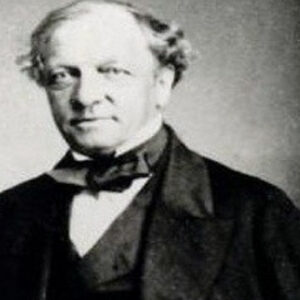Thomas Brassey was a 19th-century civil engineer who built much of the world’s railways, including one-sixth of the railway network in the United Kingdom and more than half of the railway network in France. He was in charge of constructing significant lines in a number of other nations, including Canada, South America, Australia, and India. He also built docks, stations, bridges, and tunnels as a railway engineering contractor. He began his career in civil engineering as an apprentice to a land surveyor and agent when he was 16 years old. As a teenager, he also encountered Thomas Telford, a well-known civil engineer who had a profound influence on the youth. Brassey was a bright young man when he formed a company with his former master, William Lawton, at the age of 21. Their firm prospered, laying the groundwork for Brassey’s illustrious future achievements. His first railway project was the Penkridge Viaduct, which he successfully finished. Following the success of this project, he gained notoriety and was quickly hired to develop several other railway networks. He began accepting employment outside of the country after becoming a well-known civil engineer in his own Britain. He eventually rose to prominence as a wealthy and successful businessman, and he died as “one of the wealthiest of the self-made Victorians.”
Childhood and Adolescence
He was the eldest child of John and Elizabeth Brassey and was born on November 7, 1805. He was the youngest of three siblings, with two brothers and a sister. He was schooled at home until he was 12 years old, when he was sent to Chester’s The King’s School.
When he was 16, he became an apprentice to William Lawton, a property surveyor and agent. He assisted in the surveying of the new Shrewsbury to Holyhead route during his apprenticeship. When he was 21, his apprenticeship came to an end.
A Career of Thomas Brassey
Brassey was a gifted and brilliant young man, and Lawton admired him greatly. Lawton took him on as a partner and the firm “Lawton and Brassey” was born.
The company grew and expanded its services beyond land surveying. They were soon in charge of stone and sand quarries, as well as a brick kiln. Following Lawton’s death, Brassey became the sole owner of the thriving company.
Encouraged by his wife and friends, he put in a bid for the Grand Junction Railway’s Dutton Viaduct, but was unsuccessful. In 1835, he was awarded the contract to build the Penkridge Viaduct, which he completed successfully.
He obtained contracts to build the Chester and Crewe Railway, the Glasgow Paisley and Greenock Railway, and the Sheffield and Manchester Railway over the next few years. He collaborated with additional civil engineering partners on all of these projects.
The French, inspired by the British developments in the railways sector, resolved to build large railway projects for which British engineers were invited to submit tenders. Brassey collaborated with a former rival, William Mackenzie, to submit a tender that was accepted in 1841.
Between 1841 and 1844, the two men worked on a number of French projects, constructing a total of 437 miles (703 km) of railway lines. Following the French Revolution of 1848, the engineers were forced to hunt for work outside of France.
In 1845, he received various contracts in England, Scotland, and Wales. He and Locke collaborated on the construction of the Lancaster and Carlisle Railway, which ran through the Lune Valley and over the Shap Fell.
In 1852, he was awarded the largest contract of his career: the construction of Canada’s Grand Trunk Railway. On this project, he collaborated with various partners, including the construction of the Victoria Bridge over the river in Montreal, which is still regarded one of the world’s longest bridges.
He built The Canada Works, a factory in Birkenhead, Canada, alongside his partners. The firm was capable of producing 40 locomotives per year, as well as the metallic components needed for the construction of railway lines and bridges.
He was responsible for a variety of drainage systems, including the London sewerage system and the Calcutta waterworks. In addition to railway lines, he built a number of piers, stations, and bridges. He was a clever and successful businessman who worked till the very end of his life.
Major Projects of Thomas Brassey
The construction of the Grand Trunk Railway of Canada was one of his most significant achievements. Brassey collaborated with Peto, Betts, and Sir William Jackson to construct this 539-mile (867-kilometer) railway line that connected Quebec and Toronto.
Achievements & Awards
Despite his wealth, he was a modest man who refused to accept any decorations from his homeland, however he did accept international honors such as the French Légion d’honneur, the Italian Order of Saints Maurice and Lazarus, and the Austrian Iron Crown out of courtesy.
Personal History and Legacy
In 1831, he married Maria Harrison, the daughter of a forwarding and shipping agent named Joseph Harrison. His wife was extremely supportive and encouraged him to succeed in his work. The couple had four kids, one of whom died in childhood. All of the surviving sons went on to become great professionals in their own right.
During his latter days, he battled cancer and died on December 8, 1870, from a cerebral hemorrhage. He died a very wealthy man; his estate was estimated at £5,200,000 at the time of his death.
In November 2005, his bicentenary was commemorated with a special commemorative train running from Chester to Holyhead.
Estimated net worth
Check out Thomas Brassey’s net worth in 2020. also the most recent information on Thomas Brassey’s cars, income, salary, and lifestyle. Thomas Brassey’s estimated net worth is $ 7 million, according to online sources (Wikipedia, Google Search, Yahoo Search). His primary sources of income are civil engineer, architect, businessperson, and engineer.


